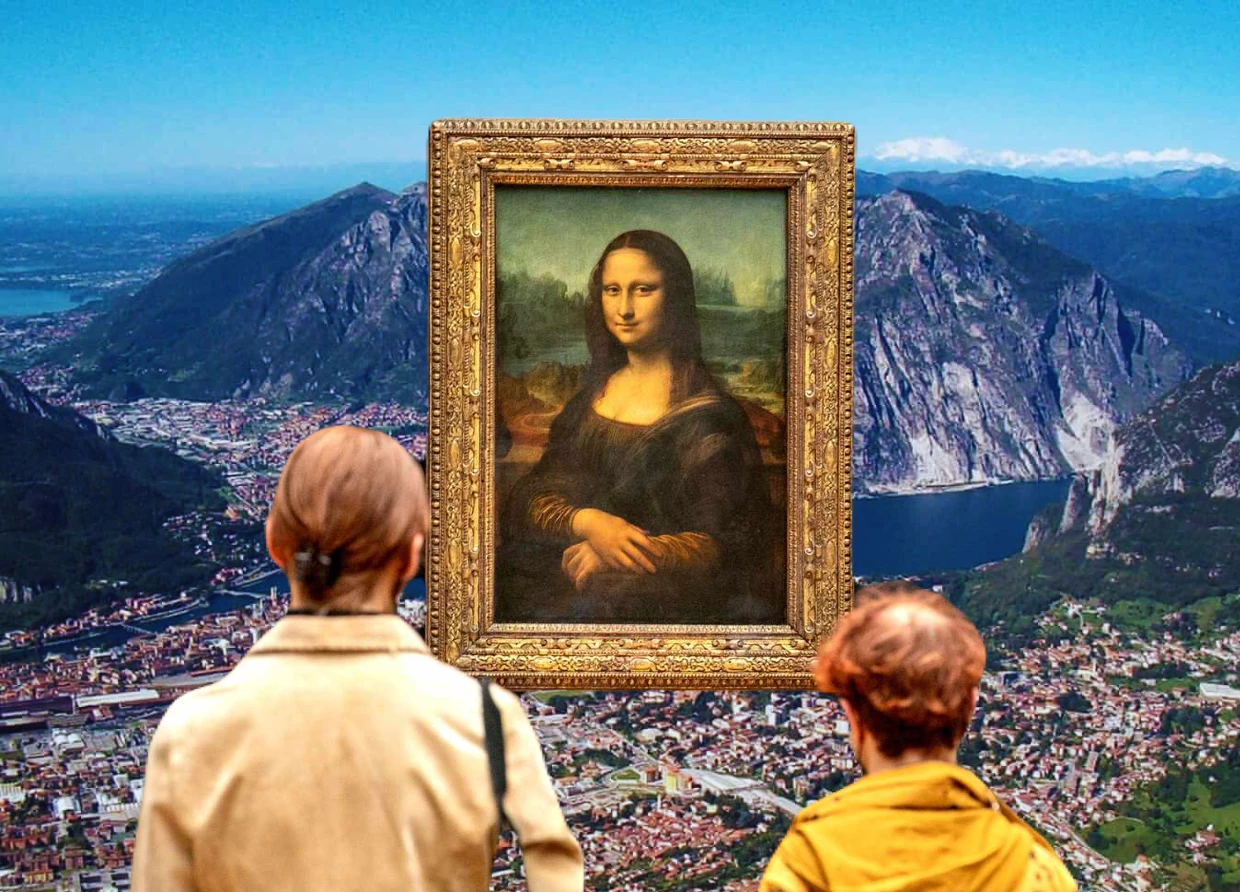GEOLOGIST AND ART HISTORIAN UNRAVELS MYSTERY BEHIND MONA LISA'S LANDSCAPE
Bridging Art and Science: Geologist's Insight Unveils Mona Lisa's Geographic Identity

In a groundbreaking revelation that could reshape our understanding of Leonardo da Vinci's iconic Mona Lisa, a convergence of geological expertise and art historical insight has illuminated the enigmatic landscape that serves as the backdrop to the world-famous painting.
Ann Pizzorusso, a distinguished geologist and Renaissance art historian, has proposed a compelling theory that Leonardo depicted recognizable features of Lecco, nestled along the picturesque shores of Lake Como in northern Italy's Lombardy region. Pizzorusso's interdisciplinary approach merges her profound understanding of geology with an acute eye for artistic detail, suggesting that the bridge, mountain range, and lake depicted in the Mona Lisa correspond strikingly to Lecco's Azzone Visconti bridge, the imposing Alps overlooking the area, and Lake Garlate, visited by Leonardo himself five centuries ago.
"The similarities are undeniable," asserts Pizzorusso, expressing her excitement over what she considers a definitive breakthrough. "I really feel it’s a home run."
This revelation challenges previous conjectures regarding the painting's backdrop, which ranged from claims linking it to Bobbio or Arezzo. Pizzorusso emphasizes that merely focusing on the bridge, a common feature across Europe, was insufficient for pinpointing the location. Instead, she emphasizes the significance of geological elements overlooked by traditional art historical analyses.
"Geologists don’t look at paintings, and art historians don’t look at geology," she remarks. "But you can give this picture to any geologist in the world, and they’ll see the similarities."
Pizzorusso's meticulous scrutiny extends to the geological composition of Lecco's terrain, noting the prevalence of limestone rocks akin to those depicted by Leonardo. Crucially, unlike alternative proposed locations, Lecco boasts a lake, reinforcing the plausibility of her hypothesis.
Having previously scrutinized Leonardo's works such as the Virgin of the Rocks, Pizzorusso's expertise extends beyond the Mona Lisa, with her analysis of vegetation and geology offering fresh insights into the master's techniques and influences.
Michael Daley, director of ArtWatch UK, lauds Pizzorusso's findings, highlighting her scientific acumen in discerning significant details within Leonardo's oeuvre. Jacques Franck, a former consultant to the Louvre, concurs, affirming Pizzorusso's theory as a compelling synthesis of geological knowledge and historical context.
This weekend, Pizzorusso will present her findings at a geology conference in Lecco, potentially cementing her theory from the very spot she believes Leonardo may have painted. In her words, "I am actually euphoric about these findings."
As the debate surrounding the Mona Lisa's origins continues to evolve, Pizzorusso's interdisciplinary approach offers a tantalizing glimpse into the intricate interplay between art and science, unraveling centuries-old mysteries with fresh perspectives and rigorous analysis.
#THE S MEDIA #Media Milenial #Geology #Renaissance art #Mona Lisa #Leonardo da Vinci #Ann Pizzorusso #Lecco #Lake Como #Lombardy #Azzone Visconti bridge #Italian landscape #Art history #Geographical analysis


























